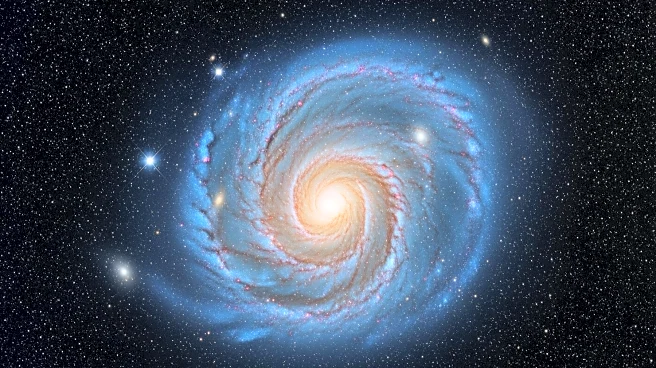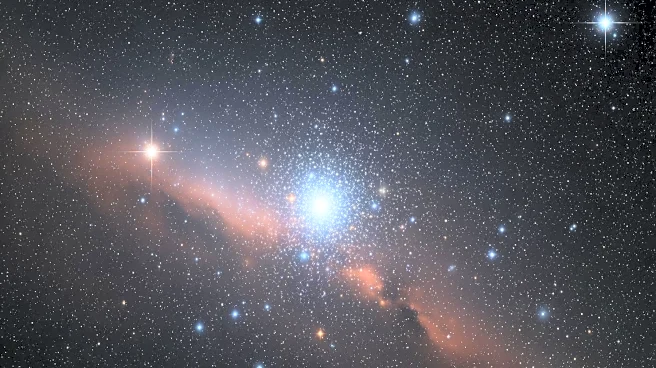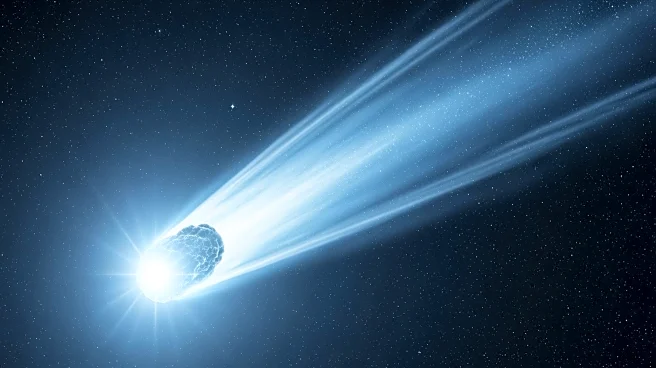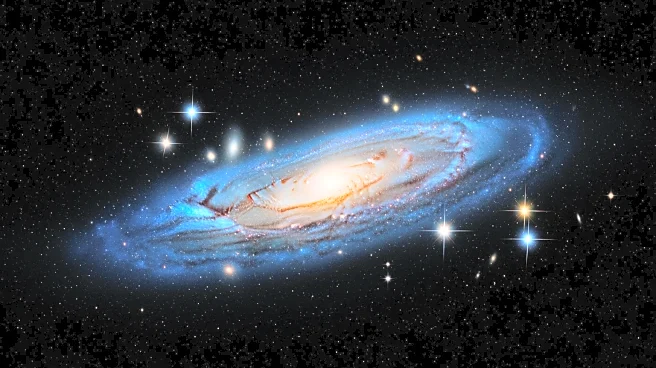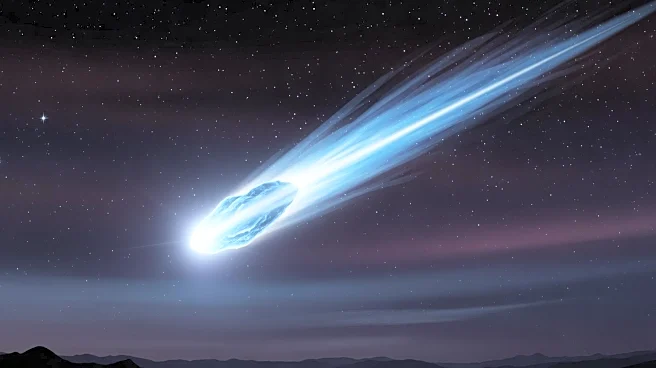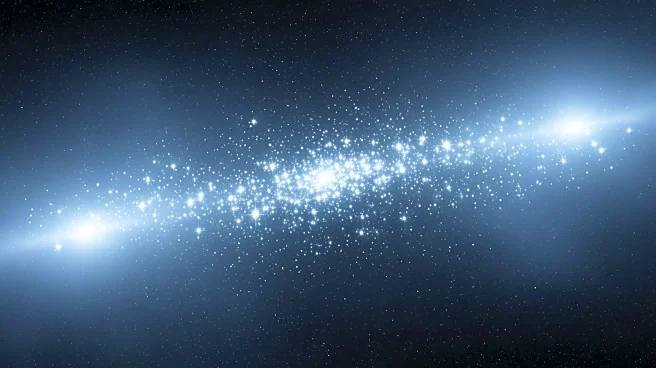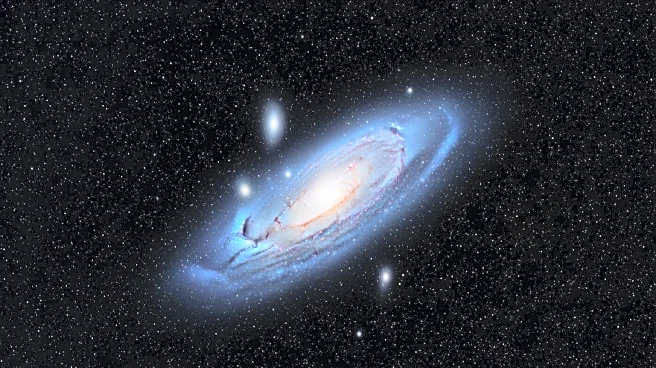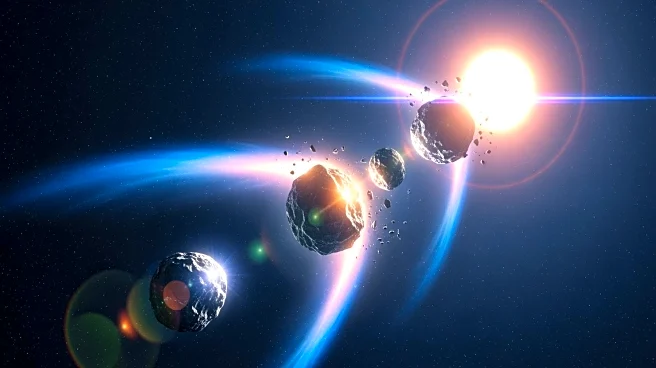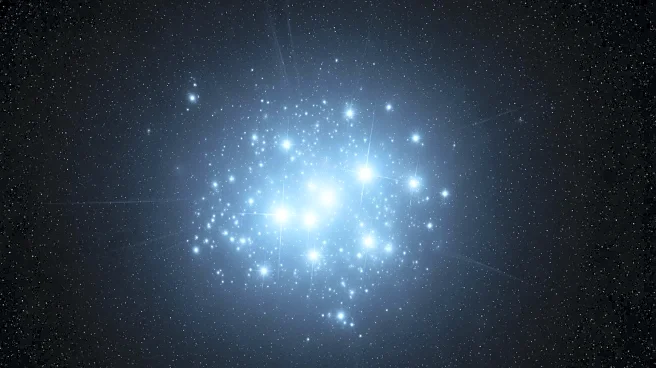What's Happening?
The Hubble Space Telescope has captured detailed images of the spiral galaxy NGC 6000, located 102 million light-years away in the constellation Scorpius. The galaxy displays a range of star ages, with older, cooler stars at its center and younger, hotter
stars in its spiral arms. The observations were part of a survey of recent supernova sites, providing insights into the masses and companions of supernova progenitor stars.
Why It's Important?
The study of NGC 6000 offers valuable information about the lifecycle of stars and the dynamics of spiral galaxies. By analyzing the colors and temperatures of stars, astronomers can better understand the processes that lead to supernovae and the evolution of galaxies. This research contributes to the broader field of astrophysics, enhancing our comprehension of cosmic phenomena and the universe's history.
What's Next?
Further analysis of the data collected by Hubble will continue to refine our understanding of star formation and supernova events. Researchers may use these findings to develop more accurate models of galaxy evolution and star lifecycle, potentially leading to new discoveries in the field of astronomy.
Beyond the Headlines
The observations of NGC 6000 highlight the importance of advanced telescopes like Hubble in exploring distant galaxies. This research underscores the role of space-based technology in expanding our knowledge of the universe, paving the way for future missions and discoveries.
